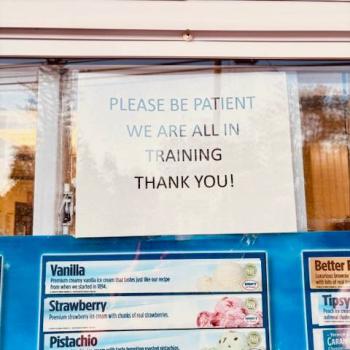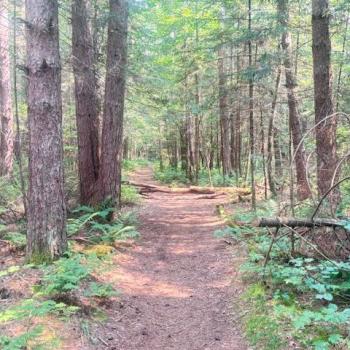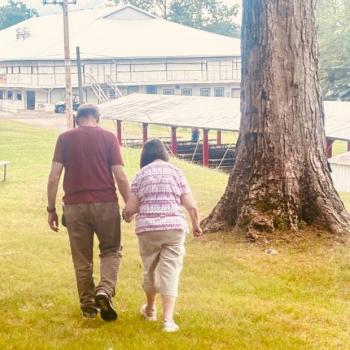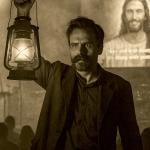Introduction
Imagine this, you are running an ultramarathon (a marathon that is any distance over a standard 26.2 mile marathon. I mostly ran 50k’s, though I did some 50 milers and one 100k), and you hit the dreaded wall. There are a lot of physiological reasons why we hit the wall and lots of training that goes into getting ready for it. For me, I would become massively uncomfortable for a few miles around mile 15-16. For inexperienced runners, if you do not address this concern, you are going to more than likely enter a very dark spot. The thoughts, “this is stupid”, “why and I here” and all the pity party rages in your head. I have seen runners resort to tears and panic attacks. Sounds like a wonderful time?
For 10 years before I got long COVID, I willingly subjected myself to around 30 ultramarathons and other endurance events. Many of these were parallel to a very dark and difficult time in my life. For me, facing these difficult tasks evened out the pressures I was facing in my home as a young dad and professionally as I was rebuilding my career.
What I learned in these years of ultrarunning was this: facing darkness is essential for human growth, understanding and wisdom. In this second post, I want to demonstrate how we can make facing darkness a lasting spiritual practice.
Our Obsessive Need to Avoid Displeasure
If you go to any store these days, especially the grocery stores, you will find all sorts of objects, devices and foods that assist us in avoiding displeasure. Many of the foods that we consume now, are making us sick. In recent article from Stanford University, John Stanford points out that “Such food now accounts for nearly 60% of U.S. adults’ calorie consumption. Among American children, that portion is close to 70%. In other words, ultra-processed food is starting to overwhelm the American diet.” The result of all this consumption of fake foods has lead to a pandemic of anxiety, obesity and death.
To add to the food poisoning, social media, entertainment and other perpetual distractions all act as mechanisms to avoid displeasure. This obsession has turned to an addiction.
Because of this, kids play outside less, young adults are less resilient to deal with the hardships that occur from the transition from adolescence to adulthood. As a clinician, I see many young and middle age people who are relationshipless and disconnected with the world around them, all in the pursuit of avoiding displeasure.
I suspect as a contemplative, there is a better way.
Darkness as Nothingness: The Womb of Possibility
In Native American practice, the “night apart” or “vision questing” refers to a traditional Native American rite of passage where individuals fast and seek spiritual guidance in isolation. This practice typically involves spending several days alone in nature, praying and seeking visions that can provide insight or direction for their lives. “Traditionally, vision quests commonly resulted in instructions on how to use power from the spiritual world in the course of conducting tribal rituals and ceremonies, dreams of where to find curative herbs for the health of the people, or dreams of animals—these animals might help the seeker feed his family, help a warrior in battle, or help a scout in pursuit of the enemy. Animal visions often gave the seeker a song which would call that animal helper in the future.”
We can learn a lot about the vision quest. Here, we can begin to see darkness not as an evil or even an abhorrent experience to avoid but a pathway towards emptiness and potential. Nothingness then becomes a space for creation, transformation and self – discovery. When we day to encounter our seasons of darkness, we begin to understand that discomfort and uncertainty are not adversaries, but guides. I find in the dark and quiet spaces when running or hiking, I find the inspiration to be a better father, husband, therapist and pastor. These dark moments gently and at times abruptly dismantle the walls I inevitable build to avoid pain and discomfort.
When we engage in moments of discomfort, something as simple as a 5-10 minute sit, we invite discomfort and begin to live in a space where we invite raw, unadorned silence where our deepest questions lie. It is in silence that we find ourselves stripped of facades—emptied of easy answers and forced to listen for subtler wisdom. Just as ancient seekers entered the night seeking visions, we too might find that by allowing ourselves to be unmoored in the dark, we enter the threshold of transformation. Here, potential stirs, waiting to be shaped by our willingness to dwell in the unknown, to let what seems barren become fertile with possibility.
God Is Not Afraid of the Dark
Where does our strength lie when we are in our moments of darkness and discomfort? God. God is not afraid of the darkness. Throughout scripture, darkness is not a place where God is absent, but rather a realm suffused with divine presence and creativity. In Genesis 1:2, before the world was formed, “darkness was over the surface of the deep,” and it is within this primordial obscurity that God begins creation. God’s Spirit hovers over the waters, unafraid and active, bringing forth light from the deep.
Famously, God is with Jesus in his temptation in the Gospels, however, God shows up in other places as well. We can observe God’s presence in silence is found in the account of Elijah on Mount Horeb. After a dramatic display of wind, earthquake, and fire, the Lord was not in these powerful phenomena. Instead, Elijah encounters God in “a gentle whisper” (1 Kings 19:12). This passage underscores the idea that God’s presence is not always in the grand and the loud but often in the quiet and the still.
In the Psalms, silence is frequently associated with waiting on God and experiencing God’s presence. Psalm 62:1 states, “Truly my soul finds rest in God; my salvation comes from God.” Here, the psalmist expresses a deep trust in God, finding peace and assurance in the quietness of waiting.
We can walk away from these examples with this lesson, if God can embrace the darkness, so can we. Wherever we are, God is there as well.
In Closing
To close, embracing darkness, then, is not a passive surrender but a deliberate act of engagement with the places within us that we most fear and most need to understand. It is a spiritual practice of questing. When we quest, we “venture into the unknown, confront difficulties and dangers, and return home with new understandings of themselves and of the world.”
Each time we venture into those shadowed landscapes—whether through endurance, solitude, or silent contemplation—we confront the boundaries of our comfort and allow new strengths to take root. In these moments, discomfort and uncertainty serve not as barriers, but as gateways to empathy, wisdom, and creative possibility. By choosing to stay present in the dark, we find ourselves transformed, equipped with the courage to face life’s next difficult chapter and the clarity to walk alongside others in their own journeys through shadow and light.











